Research Groups
-

Jonathan Abbatt Abbatt Group
Our group consists of analytical, environmental and physical chemists using state-of-the-art instrumentation to study the chemistry of processes involved in environmental change, both on global and on local scales. Emphasis is placed upon understanding these chemical phenomena at a molecular level so that laboratory results can be reliably incorporated into environmental models. Current projects are related to: chemistry of the indoor environment, Arctic chemistry and connections to global warming, the role that aerosol particles play in the chemistry of the atmosphere. [more]
Research: atmospheric chemistry, aerosol processes, cloud formation, chemical kinetics
-

Arthur Chan Chan Group
Research: atmospheric chemistry, aerosol processes, health impacts of aerosol, wildfire particulate matter
-
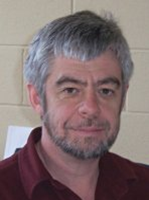
Jamie Donaldson Donaldson Group
Research in my laboratory brings techniques of physical chemistry to understand fundamental aspects of atmospheric and environmental chemistry. We use laser-induced fluorescence and Raman spectroscopies, non-linear laser spectroscopy, mass spectrometry, attenuated total reflectance FTIR and quantum chemical methods, combined with standard analytical methods to probe and understand chemical interactions of atmospheric importance. These include: the kinetics and mechanisms of reactions taking place at aerosol, water and ice surfaces and in "urban surface films"; heterogeneous photochemistry on a variety of atmospheric surfaces; and novel chemistry induced by vibrational excitation. [more]
Research: photochemistry, interfacial atmospheric chemistry, chemical kinetics
-

Scott Mabury Mabury Group
Understanding the mechanisms and pathways that determine the environmental fate, disposition, and persistence of chemical pollutants is fundamental to formulating solutions to current and future environmental problems. Currently we are investigating the role that sunlight plays in the "natural cleansing" of rivers, lakes, and oceans via the generation of reactive oxidants (e.g. hydroxyl and carbonate radical). Additionally, we are interested in the increased use of fluorine as a structural component in industrial and agrochemicals. Little is known regarding the influence fluorine has on the environmental persistence of these potential pollutants, or more specifically, on the fate of the fluorine itself. [more]
Research: fluorinated chemicals, fate of pollutants, photochemistry
-
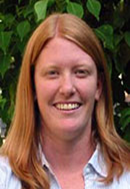
Jennifer Murphy Murphy Group
The field of environmental chemistry comprises many research questions that are both challenging to scientists and relevant to society. Research in our group applies state-of-the-science analytical techniques to address issues including urban air quality, climate change, acid precipitation, and ecosystem function. Earth systems are difficult to fully characterize because of the range of temporal and spatial scales involved, and the large number of feedbacks, non-linearities, and interactions between systems. Models developed to represent these systems are often poorly constrained due to the limited availability of long term, precise, and accurate observations with adequate geographic coverage and spatial resolution. Our focus is on field measurements, particularly of reactive nitrogen compounds, that can be used to evaluate our understanding of the rates and mechanisms of chemical transformations in the environment. [more]
Research: atmospheric chemistry, biogeochemistry, science of global change
-
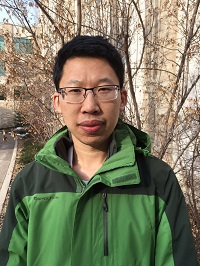
Hui Peng Peng Group
Research in our group relies on the interface between chemistry and biology to answer fundamental environmental questions. We focus on the development of novel techniques to address the following bottlenecks of current environmental science research: i) the limited capacity of traditional targeted chemical analysis strategies to monitor the growing number of known and unknown environmental chemicals introduced into commerce ; ii) limited information is available regarding toxic mechanisms (i.e., protein targets) for the vast majority of environmental chemicals. We are currently focusing on three research directions:
• Untargeted identification of novel environmental chemicals
• Investigation on sources and behaviors of environmental chemicals
• Unbiased identification of protein targets by chemical proteomics
Website coming soon
-
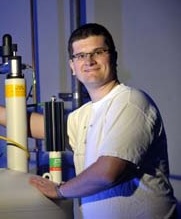
Andre Simpson A. Simpson Group
My research aims to develop novel analytical spectroscopy-based methods to investigate the reactivity, structures, and associations of molecules or groups of molecules in the environment. In analytical environmental chemistry dealing with very complex naturally occurring mixtures is unavoidable yet there is a lack of spectroscopic approaches available or in development that can provide crucial, molecular-level information desperately required to fully understand global environmental processes. Complex systems such as soils, marine sediments and atmospheric particles are routinely treated as “black boxes”. My research specifically focuses on the development of Nuclear Magnetic Resonance (NMR) Spectroscopy, and its hyphenation with other, analytical methods. NMR spectroscopy is the single most powerful analytical technique for the analysis of organic structures. [more]
Research: NMR and MRI, environmental stress in organisms, aquatic chemistry, carbon cycling
-
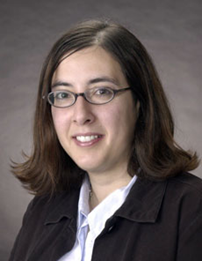
Myrna Simpson M. Simpson Group
My research in environmental and analytical chemistry involves the development and application of molecular-level analytical tools to improve the fundamental understanding of soil environmental processes. My group uses advanced mass spectrometry (MS) and nuclear magnetic resonance (NMR) methods to characterize, monitor and predict the fate of soil organic matter components in various environments. Soil organic matter is responsible for all life on this planet but its chemistry is poorly understood. Furthermore, soil organic matter plays an important role in the regulation of atmospheric CO2 and other greenhouse gases. Therefore, we are studying soil organic matter turnover in extreme environments (such as the Arctic and Antarctic) as well as under enhanced warming (ie: climate change). By understanding the fundamental chemistry of soil organic matter, we will be able to better predict its role in the biogeochemical cycling of carbon and nitrogen in a changing world. [more]
Research: NMR, contaminant sorption, organic geochemistry, soil chemistry, metabolomics
-

Frank Wania Wania Group
Our research is concerned with understanding and quantifying the fate and behaviour of chemicals in the environment. The focus is on phase partitioning and transport of organic contaminants. The presence of persistent, anthropogenic compounds in remote areas such as the Arctic has resulted in considerable interest in their global transport and accumulation behaviour. Our work aims at an improved conceptual understanding and quantification of the processes involved in the global dispersion of these chemicals. Our group has three main interests: 1) the global fate of persistent contaminants, 2) the air-surface exchange of semi-volatile organic compounds, and 3) measurements and estimation methods of physical-chemical properties and phase equilibria. [more]
Research: persistent organic pollutants, modelling chemical fate in the environment


